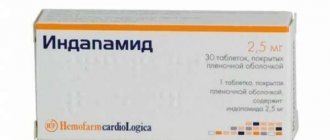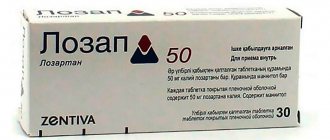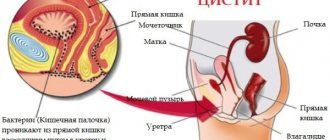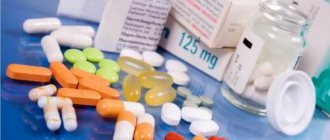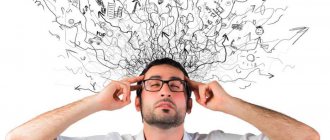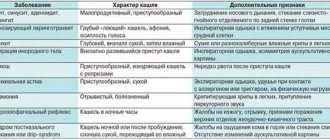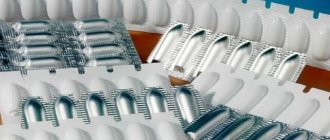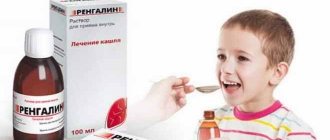People who periodically suffer from allergies know best what antihistamines are. Sometimes only timely medication can save them from painfully itchy rashes, severe coughing attacks, swelling and redness. 4th generation antihistamines are modern drugs that act on the body instantly. In addition, they are quite effective. The results from them last for a long time.
Impact on the body
To understand how 4th generation antihistamines differ, you need to understand the mechanism of action of antiallergic drugs.
These medications block H1 and H2 histamine receptors. This helps reduce the body's reaction to the mediator histamine. Thus, the allergic reaction is relieved. In addition, these drugs serve as an excellent prevention of bronchospasms.
Let's consider antihistamines of all generations. This will allow you to understand the advantages of modern means.
General information about allergies and antihistamines
Due to unfavorable natural conditions, autoimmune diseases and a list of other factors, an allergy appears - an immune response to an irritant.
There is a list of known allergens, which include food, plant pollen, pet fur and saliva, natural and synthetic drugs, microorganisms and bacteria.
To understand the new generation of antihistamines, you should find out how allergies manifest themselves.
Due to antigens that negatively affect the human body, free histamine enters the blood. The highly active substance comes into contact with H1 and H2 receptors, which provokes allergic symptoms. To stop an allergic reaction, you need to use a list of medications with antihistamine action, preferably a new generation.
Antiallergic medications are called antihistamines, and these drugs help cope with a list of allergy symptoms: various dermatoses, coughing, sneezing, itching, burning, clear mucus from the nose, a feeling of nasal congestion, swelling and other manifestations.
Pharmaceutical companies have been producing antihistamine drugs for a long time, but it is worth paying attention to the generations of drugs: a series of which is released as a new generation. Now there are IV generations of antihistamines.
Antihistamines were first mentioned at the beginning of the last century. Over time, thanks to new technologies and improved knowledge of medical scientists, a list of new drugs with second-generation antihistamine properties was created. With the development of scientific, medical and pharmaceutical fields of activity, medicines of the new III-IV generations have appeared.
It is worth mentioning that drugs with antihistamine action III, IV, that is, new generations, differ solely in their selling slogan - there is no particular difference in substances and properties between medicinal substances of the new generation (III-IV). But the difference in medications of I-II and new generations is significant - the drugs differ in composition, main pharmaceutical substances, pharmacological features and negative effects. The list of drugs with antihistamine action is constantly increasing thanks to new analogues and release forms.
Let's study antihistamine drugs of all generations, starting with the list of new generation drugs, ending with old antihistamines.
New generation tablets
First generation drugs
This category includes sedative drugs. They block H1 receptors. The duration of action of these drugs is 4-5 hours. Medicines have an excellent antiallergic effect, but have a number of disadvantages, including:
- pupil dilation;
- dry mouth;
- blurred vision;
- drowsiness;
- decreased tone.
Common first generation medications are:
- "Diphenhydramine";
- "Diazolin";
- "Tavegil";
- "Suprastin";
- "Peritol";
- "Pipolfen";
- "Fenkarol".
These drugs are usually prescribed to people suffering from chronic diseases that cause difficulty breathing (bronchial asthma). In addition, they will have a beneficial effect in case of acute allergic reaction.
Side effects
H1-blockers of histamine receptors
The most common undesirable effect, especially in the 1st generation, is drowsiness.
Other phenomena:
- dizziness, headache;
- dry mucous membranes;
- stool disorders;
- decreased blood pressure;
- cardiopalmus.
H2-blockers of histamine receptors
Drugs that had very strong undesirable effects were not re-registered in Russia. These include cimetidine. There was information that it had a bad effect on male potency and the cardiovascular system.
Frequent side effects of other drugs:
- nausea, vomiting;
- drowsiness;
- slow heart rate;
- dry mouth;
- loss of vision clarity.
H3-blockers of histamine receptors
Only side effects of those drugs that affect all 3 types of sensitive cell endings will be given.
- insomnia;
- allergic reactions;
- weakness;
- headache.
2nd generation drugs
These medications are called non-sedatives. Such products no longer have an impressive list of side effects. They do not provoke drowsiness or decreased brain activity. Medicines are in demand for allergic rashes and itchy skin.
The most popular drugs:
- "Claritin";
- "Trexyl";
- "Zodak";
- "Fenistil";
- "Gistalong";
- "Semprex".
However, the big disadvantage of these drugs is their cardiotoxic effects. That is why these drugs are prohibited for use by people suffering from cardiovascular pathologies.
Generations of allergy pills
The following groups of drugs can be used in treatment:
- hormonal;
- antihistamines;
- homeopathic.
However, any allergy pills are prescribed only after a preliminary comprehensive examination. Self-medication is unacceptable! At best, it will not give the desired result (negative symptoms will not be eliminated), and at worst, serious complications will arise. For this reason, there must be a responsible approach to choosing a drug.
Antihistamines are most often prescribed to treat allergies. These drugs have a special principle of action. They block histamine receptors. Thanks to this, biologically active substances do not bind to body tissues. Histamine itself in its normal state does not pose a danger to the body. However, the situation changes when the substance reacts with an allergen. Active histamine promotes the release of adrenaline. This causes increased heart rate, skin rashes, swelling, headaches, and so on.
Antihistamine allergy tablets come in three generations. Each of them is designed for a specific situation. All these generations have their own characteristics:
- First generation
- drugs of this group are characterized by rapid action (literally in an hour and a half, all symptoms fade away). Such medications can be prescribed to children and pregnant women. However, these medications also have negative sides. Since they can be used for a long time, the drugs are addictive, which reduces their effectiveness. In addition, such tablets disrupt the heart rhythm and cause a hypnotic effect. - Second generation
- unlike representatives of the first generation, such medications are not addictive and do not have a hypnotic effect. For this reason, the benefits of taking these medications are great. However, it is not recommended for elderly patients and those suffering from cardiovascular diseases to take them. - Third generation
- these tablets are considered very popular. They are most effective and have a minimum number of side reactions. More often these medications are prescribed in a monthly course.
Another group of drugs used are homeopathic remedies. For their production, exclusively natural substances are used. More often, this group of medications is perceived as auxiliary therapy. This attitude is not surprising, since homeopathic remedies act very slowly. They cannot remove negative allergic symptoms in a matter of hours. The desired result will appear only after a while. For example, it may take six months or even more to treat a chronic disease.
In case of complicated allergies, it is effective to use hormonal drugs. Such drugs are developed based on adrenal hormones. These medications quickly relieve the pronounced symptoms that accompany allergies. After the patient feels significant improvement, hormonal drugs are discontinued. Next, the allergist prescribes a subsequent treatment regimen. For example, they may prescribe cromones, drugs that stabilize mast cells and promote the production of histamine.
3rd generation drugs
These are active metabolites. They have excellent antiallergic properties and have a minimal list of contraindications. If we talk about effective antiallergic drugs, then these drugs are precisely modern antihistamines.
Which drugs from this group are the most popular? These are the following medications:
- "Zyrtec";
- "Cetrin";
- Telfast.
They do not have a cardiotoxic effect. They are often prescribed for acute allergic reactions and asthma. They provide excellent results in the fight against many dermatological diseases.
Types of antihistamines and their use
H1 blockers
Drugs of this type act primarily on H1 receptors. In medicine, they are used to eliminate allergic reactions: inflammation, swelling, redness, rashes and other things.
Divided into 3 generations:
- First generation. This generation is characterized by low selectivity of action. This means that the drugs affect not only the desired cells, but also others, thereby causing many unwanted reactions. Requires multiple doses per day. And the higher the dosage, the less the expected effect and the more side effects. Almost all drugs cause drowsiness.
- Second generation. They have a longer effect, and can be used only once a day. Cause fewer side effects, including drowsiness.
- Third generation. They are active metabolites of the previous generation. This means that the substances of these drugs begin to act immediately; they do not first undergo breakdown, like the others. This implies a high rate of onset of effect and a decrease in the negative impact on the liver.
We recommend reading:
Gastric and duodenal ulcers: signs and treatment methods
All generations are used in the following conditions:
- allergic runny nose and cough;
- allergic dermatitis;
- swelling;
- itching, skin rashes;
- hives;
- Quincke's edema;
- anaphylactic shock.
H2 blockers
Drugs in this group act mainly on the second type of receptor. They are responsible for regulating the production of hydrochloric acid in the stomach and an enzyme called pepsin - it is responsible for the breakdown of proteins.
Feature: in addition to the effect on the digestive system, they have a weak effect on the body’s immune processes and, to a lesser extent than H1 blockers, relieve inflammation.
They are divided into several generations, where each previous one is more perfect, devoid of some side effects and the speed of onset of the therapeutic effect is increased. The 4th and 5th generations have not yet been registered in Russia. The first generation was discontinued due to serious adverse events.
The products have found their application in the treatment of:
- peptic ulcer of the stomach and duodenum;
- prevention of the formation of erosions when taking anti-inflammatory painkillers;
- ulcerative lesions of the esophagus, which occurred due to the reflux of gastric contents into it;
- prevention of bleeding in the gastrointestinal tract when taking certain medications;
- gastritis with high acidity.
H3 blockers
Receptors of the third type are mainly found in the brain. Unlike other drugs, this group of substances has a stimulating effect and can even improve memory, attention, and increase mental performance.
So far, there are few drugs that block only these sensitive cell endings. Basically, those drugs are used that do not have selective activity against the third type, but act on all types of histamines.
Application:
- noise in ears;
- hearing loss;
- dizziness accompanied by nausea and vomiting.
4th generation drugs
Recently, specialists have invented new medicines. These are 4th generation antihistamines. They are distinguished by their rapid action and long-lasting effect. Such drugs perfectly block H1 receptors, eliminating all unwanted allergy symptoms.
The great advantage of such medications is that their use does not harm the functioning of the heart. This allows us to consider them quite safe means.
However, we should not forget that they have contraindications. This list is quite small, mainly children and pregnancy. But it is still recommended to consult a doctor before use. It would be useful to study the instructions in detail before using 4th generation antihistamines.
The list of such drugs is as follows:
- "Levocetirizine";
- "Erius";
- "Desloratadine";
- "Ebastine";
- "Fexofenadine";
- "Bamipin";
- "Fenspiride";
- "Cetirizine";
- "Xyzal."
New generation antihistamines: list and review
Common food allergens.
How to present an article about antihistamines well to the reader? The first thing you need to say is that allergies are a terrible disease that kills millions of people, and in thirty years it will affect the entire population. Then - tell them that here and only here you can read about effective medications of the latest generation. But let’s admit right away: in reality, everything is much more complicated, and the latest generation is not so recent. Below we will try to tell you everything about antihistamines that can be crammed into a small magazine article.
It is possible to scare about an allergic epidemic, but it is difficult. There are many allergic diseases; they are not easy to collect and count. Take pollen, for example, one of the most common allergens. An international study of asthma and allergies in children, which included nearly two million people from 105 countries, found that pollen allergies affect 22% of adolescents worldwide. This figure differs depending on the region: in Africa it is 29.5%, in Oceania - 39.8%, in Northern Europe - 12.3%. But scientists obtained this data not through tests, but through questionnaires. Their reliability depends on whether the study participants made mistakes or not. And this happens - for example, a study on penicillin allergies showed that the disease is detected in only 22% of patients who complain about it.
With food allergies, things are not so simple either. The research results differ depending on what methods the scientists used. The gold standard for diagnosing food allergies is a double-blind, placebo-controlled food challenge test, in which the patient eats the suspected allergen under the supervision of a physician. In English, the name of the method is often shortened to the funny “DBPCFC” - DBPCFC. In 2013, the European Academy of Allergy and Clinical Immunology released a meta-review of food allergy research. It showed that scientists rarely performed DBPCFC and relied primarily on skin testing and IgE testing, although these methods significantly overestimate the incidence of the disease. Based on what the study participants themselves said, the prevalence of food allergies in Europe is 5.9%. But food tests showed 0.9% - this is about six and a half times less.
Be that as it may, those who have already encountered allergies are not particularly concerned about statistics - they need to be treated with something. Preferably, so as not to feel drowsiness and other “side effects”. Everyone knows that you need to take antihistamines for allergies, but not everyone knows that they also treat ulcers, narcolepsy, and in the future they are going to fight Alzheimer’s, Parkinson’s, schizophrenia and epilepsy. To understand how medications of the same class treat everything and where to go for an allergy sufferer, let’s start from the very beginning - with histamine. The substance we have to fight - what does it do?
It's easier to say what histamine doesn't do. It dilates blood vessels (“constricts any”) and increases their permeability, promotes the secretion of gastric juice, causes contraction of smooth muscles (including bronchi) and scabies. It also works as a mediator in the brain: it regulates sleep and awakening, reduces seizure activity, affects food and water consumption, participates in the regulation of body temperature and in the learning process. And, of course, it controls the immune response: allergic runny nose, sneezing and cat intolerance - this is all histamine.
How does one substance manage to perform so many different functions? The fact is that there are four types of histamine receptors in the body; they are located in different organs and tissues. In the brain, smooth muscles, blood vessels and some other tissues there are receptors of the first type, H1. In the gastric mucosa, smooth muscles, heart tissue, cartilage tissue, etc. - receptors of the second type, H2. H3s live primarily in the central nervous system, such as the basal ganglia and hippocampus, and can be found in small amounts in the cardiovascular and digestive systems. H4 are localized in intestinal tissues, bone marrow, leukocytes, thymus, spleen, etc.
The effect of histamine on the body depends on which receptor it binds to, so different medications are needed for different purposes. Antihistamines are divided into H1-, H2-, H3-, H4-blockers. If you hear the phrase “latest (or new) generation antihistamines ,” we are talking about H1 blockers, which are used to treat allergies. H2-blockers are not divided into generations, H3-blockers are just beginning to enter the market, and the appearance of the first H4-antihistamines on the shelves is still a long way off. It is H1 blockers (they are also called “antagonists” or “inverse agonists” - depending on the type) that treat allergies.
Russian Wikipedia talks about four generations of H1 blockers, but this is incorrect: in fact, there are only two. The existence of “newest third-generation drugs” is a myth, but pharmaceutical companies sometimes use this term for advertising purposes, and allergy websites are happy to write about this topic and mislead readers. Let's figure out on what basis H1 blockers are divided into generations.
The first allergy drugs easily crossed the barrier between the blood and the brain - the so-called blood-brain barrier (BBB) - and caused drowsiness. Remember when we talked about how histamine regulates sleep and awakening? It stimulates brain activity and is responsible for wakefulness - it is not surprising that suppression of receptors in the central nervous system produces a sedative effect. In addition, first generation antihistamines (for example, chloropyramine, known to us as Suprastin , and clemastine, which we know as Tavegil ) lead to impaired memory and concentration, reduce learning ability and productivity. In addition, you have to take them several times a day, and taking them at night does not help to avoid “side effects” - in general, the first generation of drugs was more of a “necessary evil” than a “happy deliverance”. The Global Allergy and Asthma European Network even recommended banning the over-the-counter sales of these drugs after completing a risk study in 2010.
Over time, scientists developed substances that “moved” from the blood to the brain in smaller quantities or could not do this at all - they were called “second-generation drugs.” Here they are:
- acrivastine
- cetirizine
- azelastine
- olopatadine
- loratadine
- ketotifen
- rupatadine
- mizolastine
- ebastine
- bilastine
- bepotastine
- terfenadine
- hifenadine
- levocabastine
- astemizole
Second-generation drugs did not cause drowsiness at a standard dose (and some even with a significant increase in dose), and the tablets lasted for the whole day. But some of them were bad for the heart. For astemizole and terfenadine, this effect was so pronounced that they were withdrawn from sale in many countries.
A few years later, scientists obtained derivatives (metabolites and stereoisomers) of second-generation drugs, which, according to manufacturers, were more effective, did not cause drowsiness and did not harm the heart. These are the medications:
- levocetirizine (trade names “Xyzal” , “Glenset” , “Suprastinex” , “Cesera” , “Elcet” , “Zodak Express” )
- desloratadine ( Desal , Loratek , Lordestin , Erius , Neoclaritin )
- fexofenadine ( "Allegra" , "Telfast" , "Fexofast" , "Fexadin" , "Fexofen" )
Some called these substances “third generation drugs.” Researchers began to argue heatedly about which generation they belonged to and on what basis. To put an end to the debate, in the early 2000s the British Society of Allergists and Immunologists initiated the creation of the Consensus Group on New Generation Antihistamines. 17 experts from the United Kingdom, Italy, Canada, the USA and Japan determined the criteria that third-generation drugs must meet:
- no cardiotoxicity;
- no interaction with other drugs;
- no effect on the central nervous system.
Experts analyzed data from published clinical studies and came to the conclusion that none of the existing drugs can be called a “third generation drug”. However, in some scientific works, levocetirizine, desloratadine, fexofenadine and norastemizole are still informally called this. Let's figure out what these drugs are, what side effects they have, who can take them, and who is not recommended. Everything is learned by comparison, so we have presented the data in the form of a table - this makes it easier to understand how the drugs are similar and how they are different:
| Dosage | Begins to act after | The maximum concentration in blood plasma reaches | Duration of action | Common side effects | Who shouldn't | Anyone can, but be careful | |
| Levocetirizine is an isomer of cetirizine. | 5 mg | 1 hour | 0.9 hours | minimum 24 hours | Drowsiness, headache, dizziness, dry mouth, fatigue, weakness, nasopharyngitis, pharyngitis, abdominal pain, nausea, fever | Pregnant, nursing mothers, children under 6 months (both drops and tablets), children under 6 years of age (tablets, drops are already allowed), people with hypersensitivity to levocetirizine, cetirizine, hydroxyzine or other components of the drug, end-stage renal failure, and those who undergoes hemodialysis | Elderly patients, those with epilepsy, those with kidney disease or those prone to seizures, or those with damage to the spinal cord or prostate gland should consult a doctor; It is not recommended to combine the medicine with alcohol and other depressants |
| Desloratadine is a metabolite of loratadine. | 5 mg | 2 hours | 1-3 hours | minimum 24 hours | Headache, dry mouth, fatigue, upset stomach, drowsiness, dizziness, muscle pain, dysmenorrhea | Pregnant and nursing mothers, children under 6 months (both syrup and tablets), children under 12 years of age (tablets, syrup are already allowed), people with hypersensitivity to desloratadine, loratadine or other components of the drug | People with kidney disease should consult a doctor |
| fexofenadine is a metabolite of terfenadine | 120/180 mg | 2 hours | 2.6 hours | 24 hours | Headache, dizziness, drowsiness, diarrhea, nausea, muscle pain, cough | Pregnant and nursing mothers, children under 12 years of age, people with hypersensitivity to one of the components of the drug | Elderly people, people with cardiovascular disease (including those in the past), and those with impaired liver or kidney function should consult a doctor |
To briefly summarize this data: there is no ideal miracle remedy; each has its own advantages, disadvantages and features. The fastest-acting drug is levocetirizine , but it also produces the strongest sedative effect. MedlinePlus, a service of the US National Library of Medicine cited by the FDA, warns consumers: Don't rush to drive after taking levocetirizine, first find out how it affects you. Fexofenadine is considered the most “vigorous”: this medicine practically does not cause drowsiness, so it is recommended for pilots and those who need vigilance and speed of reaction. But fexofenadine boasts the largest dosage - 120 or 180 mg, while other drugs require 5 mg. In addition, it should not be given to children under 12 years of age: the effectiveness and safety for them have not been tested in clinical studies. The smallest allergy sufferers may benefit from levocetirizine or desloratadine (taken in the form of syrup or drops six months after birth), but neither drug is recommended for pregnant and nursing mothers.
How much better are new metabolites and isomers of second-generation drugs than their “parents”? Hard to tell. There are few comparative clinical trials in humans, and those that exist are based on small samples and sometimes contradict each other. Terfenadine was no longer sold because it had a very bad effect on the heart. Its derivative, fexofenadine, is practically free of this drawback. But then the discrepancies begin. One study claims the new drug suppresses allergic reactions better than its predecessor, a clinical trial sponsored by fexofenadine developer Hoechst Marion Roussel
.
Another study compared the effectiveness of several second-generation drugs: cetirizine, ebastine, epinastine, fexofenadine, terfenadine and loratadine. It turned out that fexofenadine is weaker than its predecessor, and cetirizine fights allergies best. The study was funded by cetirizine developer UCB Pharma
.
Studies comparing the effectiveness of levocetirizine and cetirizine show that the drugs are equally effective or indicate a slight advantage of the “parent” substance. But it must be borne in mind that levocetirizine achieves the same results at half the dose. But with regard to the effect on the central nervous system, the new drug, it seems, could not overtake its predecessor. Scientists analyzed the sedative effect of the two substances and concluded that patients in whom cetirizine causes drowsiness are unlikely to react differently to its isomer (this study also had a small sample).
Desloratadine, fexofenadine and levocetirizine cannot be called “Antihistamines 3.0” - “2+” is more suitable for them. Still, they harm the heart less than earlier second-generation drugs and do not depress the central nervous system as much as drugs from the first. Even when clinical trial participants were given desloratadine and levocetirizine at doses four times higher than normal, none of them experienced side effects severe enough to warrant stopping treatment. You should not repeat this experiment on yourself: if you decide to connect your life with antihistamines of the latest - second - generation, it is better to consult a doctor. The most reliable information about medications can be found in official instructions and the State Register of Medicines.
* Attention! Not all side effects are listed in the table! Before using any of the drugs, read the instructions or consult your doctor (or better yet, both).
You might be interested in:
It gets worse for allergy sufferers every year. 5 AAFA recommendations.
The best drugs
It is quite difficult to identify the most effective drugs from the 4th generation. Since such drugs were developed not so long ago, there are few new antiallergic drugs available. In addition, all drugs are good in their own way. Therefore, it is not possible to identify the best 4th generation antihistamines.
Medicines containing fenoxofenadine are in great demand. Such drugs do not have a hypnotic or cardiotoxic effect on the body. These drugs today rightfully occupy the place of the most effective antiallergic medications.
Cetirizine derivatives are often used to treat skin manifestations. After taking 1 tablet, the result is noticeable after 2 hours. At the same time, it persists for quite a long time.
The active metabolite of the famous Loratadine is the drug Erius. This drug is 2.5 times more effective than its predecessor.
The medicine “Xyzal” has earned great popularity. It perfectly blocks the process of releasing inflammatory mediators. As a result of this effect, this remedy reliably eliminates allergic reactions.
Allergy pills - ranking of the best
Selecting your own medications is dangerous! At the first allergic manifestations, you should immediately seek medical help. In some cases, consultation with several specialists is even required. Before prescribing pills for an emerging allergy, the doctor will take into account the following facts:
- the age of the patient who contacted him;
- what concomitant diseases does this person have;
- what triggered the allergic reaction;
- what is the complexity of this disease;
- tolerance to certain medical substances.
More often, allergists prescribe new generation antihistamines. However, there are exceptions to the rules.
The best allergy pills, according to experts:
- Dexamethasone;
- Erius;
- Eden;
- Zyrtec;
- Zodak;
- Cetrin;
- Claritin;
- Loratadine;
- Suprastin;
- Trexyl.
Medicine "Cetirizine"
This is a fairly effective remedy. Like all modern 4th generation antihistamines, the medicine is practically not metabolized in the body.
The drug has proven itself to be highly effective for skin rashes, as it is able to penetrate perfectly into the epidermis. Long-term use of this medication in children suffering from early atopic syndrome significantly reduces the risk of progression of such conditions in the future.
2 hours after taking the tablet, the desired lasting effect occurs. Since it lasts for a long time, taking 1 pill per day is enough. Some patients can take 1 tablet every other day or twice a week to achieve the desired result.
The medicine has a minimal sedative effect. However, patients suffering from kidney pathologies should use this remedy with extreme caution.
The drug in the form of a suspension or syrup is approved for use in children from two years of age.
Indications for the use of the latest generation antihistamines
Allergy medications, including new generation medications, require a specific list of indications for use. We recommend visiting a doctor; if necessary, he will prescribe a suitable remedy.
Medicines are prescribed in the following cases:
- acute/chronic urticaria;
- allergic rhinitis (seasonal/year-round);
- allergic conjunctivitis;
- acute/chronic dermatitis;
- allergic manifestations during ragweed flowering.
Antiallergic drugs are allowed to be taken not only during the acute course of the disease. They support the condition when used for preventive purposes after relieving Quincke's edema, anaphylactic shock, allergies to medications, etc.
Medicine "Fexofenadine"
This drug is a metabolite of terfenadine. This medication is also known as Telfast. Like other 4th generation antihistamines, it does not cause drowsiness, is not metabolized and does not affect psychomotor functions.
This remedy is one of the safe, but at the same time extremely effective drugs among all antiallergic medications. The drug is in demand for any manifestations of allergies. Therefore, doctors prescribe it for almost all diagnoses.
Antihistamine tablets "Fexofenadine" are prohibited for use by children under 6 years of age.
The importance of histamine in the functioning of the body
If histamine is detected in the blood in large quantities, this indicates that there is a malfunction in the body, expressed as an allergic reaction.
To understand ways to level out negative manifestations, you should analyze the entire mechanism of action. When asking the question regarding histamine - what is it, it should be noted that this biogenic amine is known in the field of biochemistry as 2-(4-imidazolyl) ethylamine or b-imidazolyl-ethylamine. Its gross formula is as follows: C5H9N3. The molar mass is 111.15 g/mol.
According to its dominant purpose, the hormone histamine is the main mediator of allergic reactions, characterized by rapid manifestation and belonging to the immediate type. In addition, it takes on the role of a regulator of many vital physiological processes.
In its pure form, these are colorless crystals soluble in water, as well as in ethanol, which show insolubility in ether. The maximum melting point reaches 83.5°C, and boiling point – 209.5°C.
In the body, the synthesis of histamine as a biogenic compound occurs as a reaction of decarboxylation of histidine, an amino acid that is a structural unit of protein. Histidine decarboxylase acts as a catalyst for the reaction.
In its normal inactive state, histidine is found in histiocytes - the so-called mast cells of numerous organs and tissues of the body. The reaction of histamine production is triggered as a result of the influence of a number of factors that cause its release:
- burns;
- anaphylactic shock;
- hives;
- various injuries;
- frostbite;
- side effects from certain medications;
- exposure to food allergic agents;
- hay fever;
- stress;
- irradiation, etc.
In addition to histamine produced by the body, that is, endogenous, there is an exogenous analogue that comes from the outside. Most often, its source is food varieties.
For medical use, histamine can be produced synthetically or obtained using the technology of bacterial breakdown of natural histidine.
The drug "Desloratadine"
This medicine is also a popular antiallergic drug. It can be used for any age groups. Since medical pharmacologists have proven its high safety, this drug is sold in pharmacies without a prescription.
The drug has a slight sedative effect, does not have a detrimental effect on cardiac activity, and does not affect the psychomotor sphere. Often the medicine is well tolerated by patients. In addition, it does not interact with other medications.
One of the most effective medications from this group is the drug “Erius”. This is a fairly powerful antiallergic medicine. However, it is contraindicated during pregnancy. In syrup form, the medicine is approved for use by children from 1 year of age.
Contraindications
| Absolute | Relative |
|
|
Folk remedies for level normalization
There is a group of products, the so-called histamine liberators, which, while not allergens, contribute to the appearance of urticaria because they stimulate mast cells to release histamine.
In cases where a false allergy is caused by special liberator substances, it is important to know the amount of histidine in the most common products, especially for adherents of folk remedies.
Table 1 - Histidine content in some products (g/kg).
Alcohol has a negative effect because it contains quite high levels of histamine. The negative effect is enhanced by the fact that acetaldehyde, a product of the breakdown of alcohol, disrupts the functioning of the DAO enzyme, which is designed to destroy histamine.
Online test for diabetes
Take the test to find out your risk of developing diabetes
Test: Checking your immunity
Take the test to find out how strong your immune system is
materials about all hormones,
information about diseases,
drugs and tests
All information on the site is provided for informational purposes. Before using any recommendations, be sure to consult your doctor. Self-medication can be dangerous to your health.
Antiallergic tablets for pregnant women
The modern pharmacological market does not offer antiallergic tablets that are absolutely safe for pregnant women. Often doctors give only one recommendation - to eliminate contact with the irritant. For example, during pregnancy, a woman is advised to live in a place where there is no plant whose pollen becomes an irritant.
If this is not possible, the allergy is treated. The following antiallergic tablets are not contraindicated for expectant mothers:
| Name | Gestational age |
| Cromoghlin | Recommended from the 2nd trimester and strictly under the supervision of a doctor. |
| Claritin | From the 2nd trimester. |
| Cetirizine | Apply if necessary |
| Suprastin | Can be taken in short courses from 13 to 36 weeks of pregnancy |
Important! Pregnant women should not take Diphenhydramine (causes a risk of miscarriage), Pilpofen (negative effect on the central nervous system) and Tavegil (promotes the development of neurological pathologies).
Types of antiallergy tablets
This is not the first year that humanity has been trying to find an effective cure for allergies. The result of numerous studies has been several dozen different antiallergic drugs.
In Russian pharmacies you can buy medicines of domestic and imported, French, American, Belarusian, Indian origin. American (Abbot) drugs, for example, Rupafin, are becoming increasingly popular.
Antiallergic tablets Rupafin
All antiallergy drugs are divided into drugs of the first, second and third generations. They differ from each other not only in the release date, but also in their properties, effects, and the presence/absence of side effects.
First generation
First generation antiallergy tablets are inexpensive antihistamines. They are used when you need quick help for allergies. They begin to act within 15 minutes. The antiallergic effect lasts up to 5 hours. You need to take 2-3 tablets per day.
The downside is the side effects. There are many of them and the most dangerous is considered to be sedative - a negative effect on the cardiovascular system and central nervous system. Simply put, these are anti-allergy pills that cause drowsiness. Moreover, they are toxic. Long-term use is not recommended. The most popular are “Suprastin”, “Tavegil”, “Diphenhydramine”.
| Generation | Name | Impact | Negative effects | Price |
| 1 | Diphenhydramine | Used as a pain reliever. Helps fight cough. | Depresses the central nervous system. | 75 ₽ |
| Suprastin | Relieves itching, swelling, and skin rashes. | Causes drowsiness. Not recommended for children under 6 years of age. | 130-180 ₽ | |
| Tavegil | Relieves swelling and itching. Effective for food allergies and insect bites. | Causes drowsiness. Contraindicated for hypertensive patients, heart patients, and people suffering from diseases of the gastrointestinal tract. | 170-220 ₽ | |
| Diazolin | Helps with acute forms of allergies. The drug in the form of pills is often prescribed to children with severe swelling and severe forms of allergies. | Less toxic than Suprastin and Tavegil. It has a strong irritating effect on the mucous membrane of the gastrointestinal tract. | 60-90 ₽ |
Article on the topic: Tablets for skin allergies for adults and children
Second generation
Second generation antiallergic tablets have a less pronounced sedative effect. They are effective (1 tablet per day is enough) and safe. Doctors allow some medications to be used against allergies in children. If the disease occurs in an acute form, 2nd generation antiallergenic drugs are prescribed as part of complex therapy.
The downside is the ability to negatively affect the heart muscle. At risk are people suffering from liver diseases and patients who combine taking antiallergic pills with drinking grapefruit juice. The safest drugs are Fenistil and Loratadine. These drugs are widely used to treat allergic reactions in children.
| Generation | Name | Impact | Negative effects | Price |
| 2 | Astemizole | Antihistamine. Has a prolonged action. Prescribed for chronic allergies | Has a negative effect on the heart muscle. Deaths are known. | Banned in Russia, the USA and a number of other countries. |
| Claritin | It helps well with seasonal allergies, chronic rhinitis and allergic conjunctivitis. For children over 2 years old - in the form of peach-flavored syrup. | 220 ₽ | ||
| Fenistil | Effective for various types of allergies. Lasts for a long time. | Minimal negative effect on the central nervous system. | 350 ₽ | |
| Loratadine | Has an antihistamine effect. It relieves swelling well and eliminates itching. Long-term use of these antiallergic tablets is allowed. Children over 2 years old - apricot-flavored syrup. | There is no negative effect on the body. | 40-140 ₽ |
Third generation
Antiallergic tablets of the third, new, generation are modern and the most “perfect” drugs. They have virtually no side effects. They have a prolonged (long-lasting) effect. They help quickly and effectively. The downside is the high cost. Some drugs are contraindicated in pregnant women and newborns. The best and most popular antiallergic drugs are Zyrtec and Telfast.
Important! It is better to entrust the choice of antiallergic tablets to your doctor. He will select the most effective drug, taking into account the characteristics of the disease. This will allow the patient to start treatment promptly and correctly and not waste money.
Today you can buy different drugs at the pharmacy. In order not to get confused in this variety, we suggest that you familiarize yourself with a brief description of the most popular antiallergic tablets (a list and prices are provided).
| Generation | Name | Impact | Negative effects | Price |
| 3 | Cetirizine, Zyrtec | Quickly gets to the affected area. Effectively helps in the treatment of dermatitis and various rashes. Eliminates skin itching and swelling. | There are practically no side effects. Does not have a negative effect on heart rate. | 50-80 ₽ |
| Tsetrin | Acts quickly and safely. These antiallergic tablets are recommended for children from 6 years of age, and for children from 2 years old - syrup. | It has no side effects on the central nervous system. | 150-180 ₽ | |
| Telfast, Fexofenadine | Effective for acute and chronic allergies. Safe for drivers and people performing responsible work that requires concentration. | It is excreted from the body through the kidneys, so it is not recommended for people suffering from diseases of the genitourinary system. | 280 ₽ | |
| Aleron | Effective for allergic conjunctivitis, Quincke's edema, urticaria, seasonal allergies, allergic rhinitis. Used in the complex treatment of bronchial asthma. | It does not have a toxic effect on the central nervous system or cardiac activity. | 50-80 ₽ |
Important! Patients suffering from chronic allergies try to purchase inexpensive but effective anti-allergy tablets. There are inexpensive medications in each of the above groups. It is better to entrust the choice of the appropriate one to your doctor.
Which doctor should I contact?
If acute allergy symptoms appear, you can contact a therapist or pediatrician, and then an allergist. If necessary, a consultation with an ophthalmologist, dermatologist, ENT doctor, or pulmonologist is scheduled.
Pediatrician E. O. Komarovsky talks about allergy medications:
Union of Periatricians of Russia, a specialist talks about the effect of antihistamines on the cognitive activity of children:
Rating: (votes - 1 , average: 5.00 out of 5)
Histamine and allergies
By studying the mechanism of action of histamine, it can be revealed that it promotes the transmission of electrical impulses, the vector of which can be directed to a neuron from a nerve cell, or to tissues from neurons. The difference between this mediator and similar biologically active substances is that it begins to function, causing an appropriate reaction, only at the moment when a foreign antigen enters the body.
In this case, plasma cells produce antibodies or immunoglobulins designed to neutralize a specific type of foreign element. Subsequently, when the same antigen enters the body again, an attack by the corresponding antibodies follows. As a result, an integrated complex consisting of these two elements is formed, deposited on mast cells containing inactive histamine.
The further mechanism of histamine release is associated with its activation. When its concentration in the blood is higher than the normal value, a biological effect with negative consequences appears.
General information
An allergy is the body's reaction to an irritant. When an allergen enters the body, the level of histamine in the blood increases, and the patient begins to be bothered by sneezing, lacrimation, coughing, itching, and redness of the skin.
In most cases, the disease goes away if you eliminate contact with the irritant: do not stay near flowering plants, give up citrus fruits, do wet cleaning at home every day, do not pet animals, change foundation, mascara, etc. In situations where Contact with the allergen cannot be avoided; anti-allergy tablets help.
Anti-allergy tablets for allergies
If an allergy occurs as a result of infection or poisoning, you should not only alleviate the symptoms of the disease, but also treat its cause. The patient takes tests. Laboratory tests help the allergist make an accurate diagnosis. After this, the doctor prescribes antiallergic drugs that help fight viruses and other pathologies.
Prices
Allergy medications are sold at pharmacies; most medications do not require a prescription. The cost of antiallergic drugs depends on the manufacturer and place of sale (you can buy the medicine cheaper on the Internet). Approximately antiallergic drugs in Moscow will cost:
| Name | Place of sale | Price, rubles |
| Diazolin | ElixirPharm | 53 |
| Fenistil (cream) | ElixirPharm | 302 |
| Suprastin | "5mg" | 123 |
| Cromoglin (cream) | Apteka.ru | 96 |
| Cetirizine (Zodac, Cetrin, Zyrtec) | "5mg" | 60 |
| Allegra (Telfast) | Europharm | 660 |
List and characteristics of antiallergic drugs
The first antiallergic drugs appeared in 1936. Classic formulations act quickly, but do not last long; side effects often develop while taking them; long-term therapy using outdated formulations is undesirable.
Scientists have developed effective, safe, long-acting medications for the treatment of chronic allergies. New generation drugs reduce the risk of negative reactions during therapy and contain a minimal concentration of histamine receptor blockers. The best option for an antiallergic drug for a particular patient is selected by the doctor.
First generation
- quickly stop acute reactions, reduce swelling, prevent the development of dangerous complications;
- the therapeutic effect occurs within 15–20 minutes, but lasts no more than 8 hours;
- reduce muscle tone;
- penetrate the blood-brain barrier and actively bind to brain receptors;
- sedative, anticholinergic effect, hypnotic effect;
- with prolonged use, the antiallergic effect decreases;
- drowsiness increases after taking psychotropic drugs and alcohol;
- To achieve an effect, a high dosage is needed, the drug is taken several times a day;
- many adverse reactions and contraindications;
- 1st generation antiallergic drugs are prescribed only for severe types of immune reactions. In some countries, this category is excluded from the list of approved medications.
- the sedative effect occurs infrequently;
- active components do not penetrate into the blood and do not interact with brain receptors;
- physical activity and speed of psychomotor reactions are maintained;
- prolonged effect: it is enough to take the daily dosage at a time;
- the list of side effects is shorter than that of classic formulations;
- There is no addictive effect, you can take it for two to three months;
- after discontinuation of the medication, the therapeutic effect lasts for about a week;
- drugs are not absorbed into the mucous membranes of the digestive tract;
- a moderate cardiotoxic effect remains. Problems with blood pressure, old age are contraindications for taking drugs in this category;
- the risk of side effects increases when combined with antidepressants, antifungal agents, antibiotics, and with severe liver pathologies.
List of popular medications:
Features of action and application:
- components of drugs after taking an antihistamine are converted into active metabolites;
- medications not only block histamine H1 receptors, but also eliminate the prerequisites for the further development of allergic reactions;
- there is no cardiotoxic and sedative effect, no negative effect on nervous regulation is observed;
- additional effects on cells involved in the immune response make it possible to use new agents in the treatment of most allergic diseases;
- the drugs are suitable for people whose activities involve operating complex mechanisms and vehicles;
- There are few restrictions for use; adverse reactions occur in a small percentage of patients.
List of 3rd generation antihistamines:
Look at the list and characteristics of allergic cough medications for children.
An overview of effective nasal drops for allergic rhinitis can be seen in this article.
Go to https://allergiinet.com/zabolevaniya/u-vzroslyh/krapivnitza.html and learn about the causes of urticaria in adults and methods of treating the disease.
- rapid relief of negative symptoms, the effect lasts a day or longer;
- active blocking of histamine receptors;
- elimination of all signs of allergies;
- no negative effects on the heart, central nervous system, gastrointestinal tract;
- the use of new generation antihistamines according to the instructions has a positive effect on the patient’s condition;
- fairly safe products suitable for adults and children;
- long-term use maintains the high efficiency of modern formulations;
- There are few restrictions - pregnancy, childhood (some formulations are not prescribed to the youngest patients), high sensitivity to the active components.
List of 4th generation antihistamines:
List of second generation antiallergic drugs
Second generation antihistamines do not cause sedation, that is, the list of negative effects is very small.
The drugs have a strong antihistamine property, so one tablet per day is enough for the patient to relieve allergies. Due to the use of tablets and other forms of release of antihistamines of the second generation, it does not make you sleepy, the reaction does not decrease, and concentration of attention is not impaired.
Antihistamine non-sedating medications help with a list of allergic pathologies: angioedema, nettle rash, inflammatory skin allergies. Doctors often prescribe tablets or ointments for chickenpox to relieve unbearable itching.
There is no addiction to the drugs, you just need to clarify that second generation antihistamines are not advisable for grandparents and patients suffering from arrhythmia. We must not forget that second generation drugs, like other antihistamines, can cause side effects if the dose is exceeded, so the drugs should not be abused.
List of second generation antihistamines:
- Claritin;
- Loratadine;
- Levocabastine;
- Histadil;
- Terfenadine;
- Trexil;
- Semprex and others.
List of second generation antiallergic drugs
Loratadine, Loragexal, Claritin, Lomilan
The list of antihistamine drugs is based on the chemical substance - loratadine. Antihistamines selectively block H1-histamine receptors, due to which allergy attacks stop and there are fewer negative effects.
Possible negative effects from drugs that are rarely seen:
- State of anxiety, insomnia, depressive disorders;
- Increased urination;
- Defecation disorder;
- Feeling of lack of air;
- Weight gain.
Antihistamines are produced in the form of syrup and tablets. Claritin and Lomilan suspensions are allowed to be dosed for children. The suspension is easier to dose than tablets. The drugs are prescribed to children from 2 years of age.
Loratadine is contraindicated for pregnant women in the first trimester, except in special cases when the dosage is selected by a doctor and monitored by a specialist.
Kestin, Ebastin
The drugs selectively block histamine H1 receptors and begin to act within 60 minutes after administration, the effect lasts for a day.
Kestin and Ebastine do not have a sedative effect, therefore, when taken, a person does not fall asleep, but side effects such as cardiac arrhythmia and a decrease in heart rate (Heart Rate) are possible.
The list of medications contributes to toxic damage to the liver, therefore, drugs produced in tablets are contraindicated for pregnant women, and children are prescribed only tablets from the age of 12.
Rupafin, Rupatazine
A list of drugs that are quickly absorbed into the blood effectively copes with the symptoms of urticaria, and taken with food enhances the medicinal effect.
Antihistamine tablets are indicated for children from 12 years of age, and pregnant women are not recommended to use the drugs.
What are histamine and histamine receptors, the principle of action of antihistamines
There are several types of histamine receptors in the human body.
Histamine is a biogenic compound formed as a result of a number of biochemical processes, and is one of the mediators that takes part in the regulation of vital functions of the body and plays a leading role in the development of many diseases.
Under normal conditions, this substance is in the body in an inactive, bound state, but during various pathological processes (burns, frostbite, anaphylactic shock, hay fever, urticaria, and so on), the amount of free histamine increases many times, which is manifested by a number of specific and nonspecific symptoms.
Free histamine has the following effects on the human body:
- causes spasm of smooth muscles (including bronchial muscles);
- dilates capillaries and reduces blood pressure;
- causes stagnation of blood in the capillaries and increased permeability of their walls, which entails thickening of the blood and swelling of the tissues surrounding the affected vessel;
- reflexively excites the cells of the adrenal medulla - as a result, adrenaline is released, which contributes to the narrowing of arterioles and an increase in heart rate;
- increases the secretion of gastric juice;
- plays the role of a neurotransmitter in the central nervous system.
Externally, these effects manifest themselves as follows:
- bronchospasm occurs;
- the nasal mucosa swells - nasal congestion and mucus discharge appear;
- itching, redness of the skin appears, all kinds of rash elements form on it - from spots to blisters;
- the digestive tract responds to an increase in the level of histamine in the blood with a spasm of the smooth muscles of the organs - there are pronounced cramping pains throughout the abdomen, as well as an increase in the secretion of digestive enzymes;
- on the cardiovascular system, a decrease in blood pressure and heart rhythm disturbances may be observed.
There are special receptors in the body for which histamine has an affinity - H1, H2 and H3 histamine receptors. In the development of allergic reactions, the role played mainly by H1-histamine receptors located in the smooth muscles of internal organs, in particular the bronchi, in the inner lining - the endothelium - of blood vessels, in the skin, as well as in the central nervous system.
Antihistamines act specifically on this group of receptors, blocking the action of histamine through competitive inhibition. That is, the drug does not displace histamine already bound to the receptor, but occupies a free receptor, preventing histamine from attaching to it.
If all receptors are occupied, the body recognizes this and gives a signal to reduce histamine production. Thus, antihistamines prevent the release of new portions of histamine, and are also a means of preventing the occurrence of allergic reactions.
In what cases should I take it?
- reduce the production of histamine in mast cells, preventing a new release of the active substance;
- neutralize histamine, which is active in the body.
Antiallergic drugs are suitable for eliminating negative symptoms and preventing exacerbations. It is important to know that antihistamines do not eliminate the cause of the immune response, and taking medications does not completely eliminate the body’s hypersensitivity.
Incorrect behavior: eat oranges if you are prone to food allergies and at the same time take Diazolin (Suprastin) in the hope that the active substance will quickly prevent the development of an acute reaction. The best option is to avoid contact with allergens; if this condition cannot be met, then you will have to take tablets or syrup during dangerous periods (seasonally).
Antiallergic compounds are prescribed for the following diseases:
- rhinitis, conjunctivitis (both seasonal and year-round);
- contact dermatitis;
- angioedema;
- allergy to house dust;
- swelling, itching, redness when stung by a wasp, bee or bites of bedbugs, fleas;
- drug allergies;
- allergic dermatitis accompanied by itching;
- hay fever (negative reaction to pollen from certain plants);
- atopic dermatitis;
- negative response to saliva, excrement, pet hair;
- neurodermatitis;
- intolerance to certain types of food or components (milk protein);
- anaphylactic reactions;
- Stevens-Johnson syndrome;
- allergic eczema, psoriasis;
- negative reaction to cold, heat, toxic substances, household chemicals, oils, paints and varnishes;
- allergic cough;
- bronchial asthma.
Contraindications
Restrictions depend on the name of the antiallergic drug. Classic formulations (1st generation) have more contraindications, new antihistamines have fewer.
One of the restrictions is the use of a certain form of release of antiallergic medicine: drops are prescribed for children under 2 years of age, syrups are allowed from the age of four, tablets are suitable for young patients aged 6–12 years.
Most antihistamines are not prescribed for the following conditions and diseases:
- hypersensitivity to the active substance, negative reactions to additional ingredients;
- pregnancy, breastfeeding time;
- the patient has not reached a certain age for safe use of a specific name;
- liver and kidney failure (severe stage).
